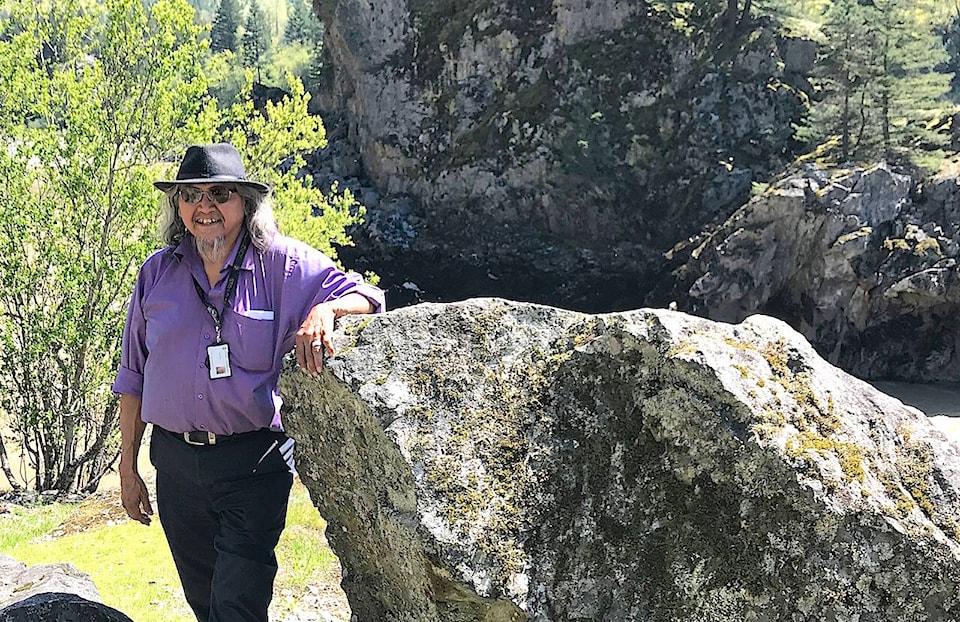It’s a landmark agreement to protect 45 sacred Stأ³:lإچ sites on Crown Land across Stأ³:lإچ Nation territory that marks a first in B.C.
The sacred, spiritual and ceremonial sites of the Stأ³:lإچ people, such as transformation sites, or cemeteries, have now acquired legal recognition, and protection under the Heritage Conservation Act.
Aitchlitz chief Angie Bailey, spokesperson for the S’أ³lh Tأ©mأ©xw Stewardship Alliance (STSA), called the agreement “a major step forward†in gaining recognition of their rights as cultural stewards.
“For a very long time, the leadership of our organization, representing the 17 Stأ³:lإچ First Nation members of the STSA, have worked toward enhancing our decision-making authority over activities that affect our lands and our resources.
“A particular focus has been protecting our sacred heritage sites, including our transformation places, our ancestral cemeteries and our places of cultural practice. These are some of our most sensitive and important places in S’أ³lh Tأ©mأ©xw (our world), which historically have been badly disrespected.
“This agreement marks an achievement in our efforts to gain greater recognition of our Indigenous culture and heritage, as well as our Indigenous rights as stewards.â€
The pilot agreement between the S’أ³lh Tأ©mأ©xw Stewardship Alliance and the province came out of a government-to-government approach.
“Our Old People worked for generations alone in this effort,†Chief Bailey said. “This is a major step forward for First Nations heritage conservation in British Columbia.â€
The deal outlines the consensus-seeking, and shared decision-making approach taken by STSA and provincial reps.
“Protection of sacred Indigenous heritage sites is critical to the spiritual well-being of Indigenous communities and an important part of our reconciliation journey,†said Katrine Conroy, Minister of Forests. “First Nations have long called for a more direct role in heritage conservation as part of reforming how heritage sites are administered in British Columbia. Through this pilot, we are acting on our commitment to working in partnership with Indigenous Peoples to protect these important sites.â€
The agreement provides “automatic†protection of artifacts, features, materials or other physical evidence of human habitation prior to 1846, as well as burial places with archeological or historical value, Indigenous rock art and heritage wrecks.
Skowkale Chief Mark Point, an STSA executive board member, emphasized that the agreement offers “recognition of our Indigenous world view and Indigenous landscape of sacred sites.â€
Leadership has been lobbying for this protection for years.
“We suffered serious losses to our heritage through the development of our lands over which we have had no say,†Point said. “Now things are changing for the better.â€
Under the act, the Province can enter into an agreement with a First Nation with respect to the conservation and protection of its cultural heritage sites and objects. These agreements, like the pilot agreement with the STSA, can provide protection for heritage sites of spiritual, ceremonial or cultural value, which would not otherwise be automatically protected under the act. Examples include sacred spiritual practice areas or ceremonial belongings.
Through government-to-government negotiation, both parties entered into this agreement to protect sites identified by the STSA as holding spiritual or cultural meaning. An implementation framework was co-developed as part of the agreement.
The pilot agreement will be in effect for one year at which point the parties will evaluate the outcomes of the agreement and recommend whether to amend, extend or allow it to conclude. This agreement will provide important learning for potential future agreements with other First Nations and inform the recently launched Heritage Conservation Act Transformation Project.
“Developing the Heritage Conservation Act agreement was a tremendous collaborative undertaking,†said David Schaepe, director of Stأ³:lإچ Research and Resource Management Centre, and lead negotiator for STSA. “We’ve opened a new chapter in expanding the scope of Indigenous heritage recognition and protection in B.C. I believe this to be a good precedent for others to work with throughout the province and more broadly.â€
RELATED:
RELATED:
Do you have a story idea to share? Email:
jfeinberg@theprogress.com
Like us on and follow us on .




